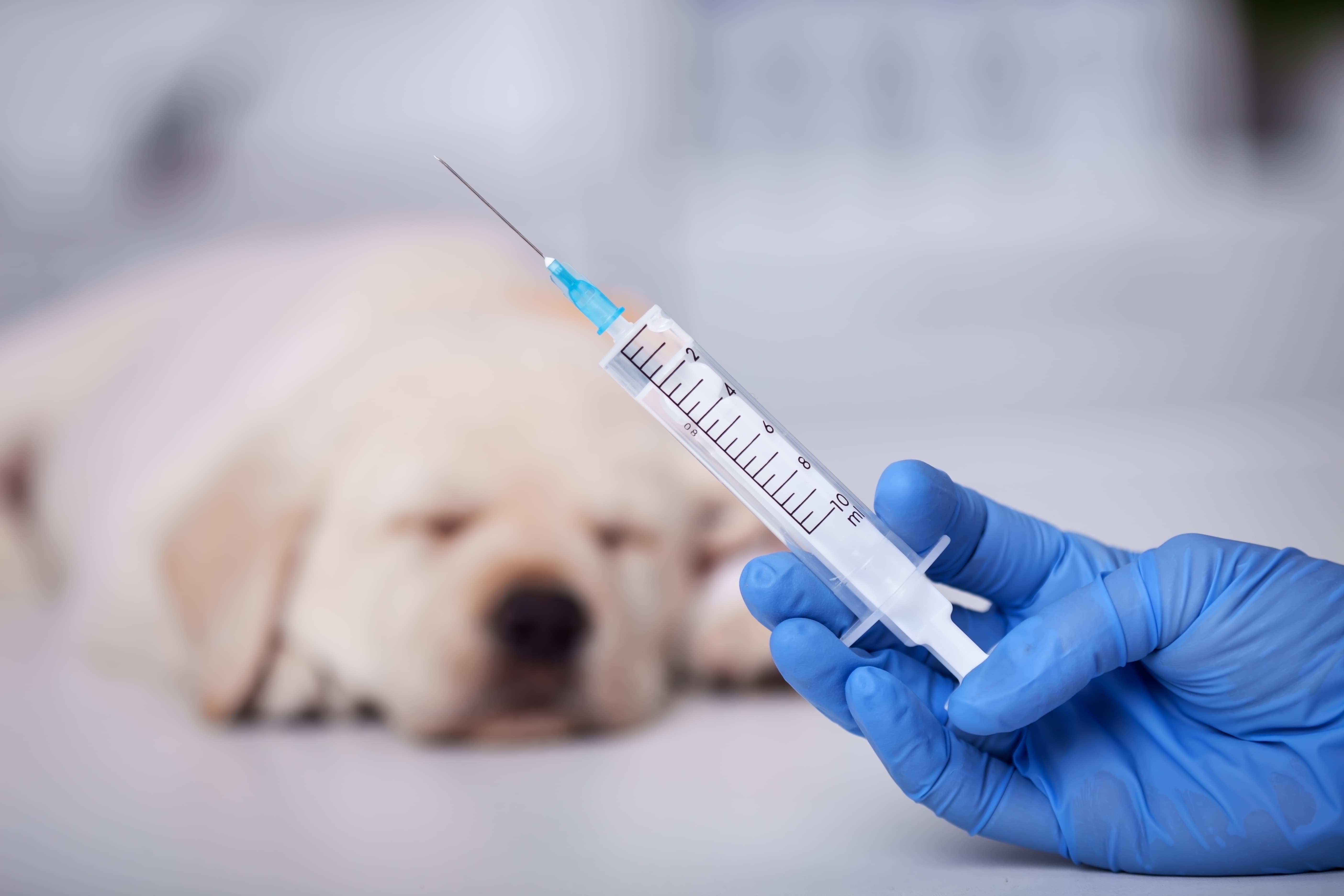Targeted injectable therapy for canine elbow osteoarthritis
Industry-leading lecturers shared an emerging approach for multimodal osteoarthritis treatment
Ilike / stock.adobe.com

Osteoarthritis (OA) is a common diagnosis that can be severely debilitating for a pet’s mobility and quality of life. Managing this progressive and degenerative disease process has evolved over the years as research reveals new therapies as part of a multimodal approach. Two sessions, both sponsored by Synovetin OA, at the Directions in Veterinary Medicine conference in Indianapolis, Indiana, addressed osteoarthritis management, and highlighted modalities the speakers have brought into their own practices.
Radiosynoviorthesis: targeted injectable therapy for elbow OA
Matt Brunke, DVM, DACVSMR, CCRP, CVPP, CVA, and Kirsty Oliver, VN, DAVN (surgical), RVT, CCRP, CVPP, VTS (rehab), delivered the joint session “Injectable therapy for canine elbow osteoarthritis.” Brunke focused a portion of his talk on a technique called radiosynoviorthesis (Synovetin OA) as novel therapy approved for elbow OA management in canines. This therapy is an injection of radioactive Tin-117m that decreases macrophages and subsequently decreases synovitis, which is associated with the pain and inflammation at the heart of OA.1 Brunke addressed the concept of targeted therapy in a previously recorded episode of dvm360® Live™, in which he said: “If you only have one arthritic joint, why are we giving systemic meds? While [they are] safe and efficacious, there's a chance that they could have issues, and if your only issue is in 1 elbow, then why not approach that 1 elbow, right?2”
How does it work?
Although some treatments tend to treat OA by reducing inflammation or targeting the pain receptors, the aim of radiosynoviorthesis is to address the underlying disease state. Inside the joint affected by OA, a vicious cycle of inflammation causes the synovial membrane to swell and the cartilage to deteriorate, said Brunke. He explained radiosynoviorthesis treatment targets the macrophages and synovial sites that are being overproduced by the body and driving the inflammation and pain.1
Radiosynoviorthesis employs microparticles of the novel radionuclide Tin-117m, which are are suspended in a colloid and injected into the joint. The Tin-117m microparticles stay in the joint and emit low energy conversion electrons with 0.3-mm range of activity. This provides targeted, nonsystemic therapy without clinically significant local or systemic adverse effects, according to the manufacturer.3 Inflammatory macrophages and synovial sites selectively engulf the microparticles and are deactivated by the conversion electron energy. The microparticles remain active and are engulfed again by nearby synovial sites and macrophages for sustained action against inflammation. The microparticles decay to harmless inert tin, with clinical effects lasting up to a year with a single injection, says the manufacturer.3
Brunke and Oliver said this treatment is a valuable addition to their multimodal approach to OA. “The treatment for osteoarthritis needs to be multimodal,” said Oliver, while presenting her session “The What and How-tos of Physical Rehabilitation.” She continued,“We are past the days when… we just give some NSAIDs and tell them to take a rest for 10 to 14 days. We're better than that; we can do better than that.4”
Results in practice
Oliver said that she and Brunke have so far used this technique on 80 patients for a total of 137 joints, mostly dog elbows, in their practice and have been seeing improvements to mobility and pain that last upward of 12 months.4 “Hands down on efficacy, this has been my game changer,” said Brunke. “Instead of gaining like 5 or 10 degrees of range of motion, which is clinically relevant, we’re gaining 20 to 30 degrees of range of motion within a month. Our lameness scores are dropping from 3 to 1 within 2 months, and that has been beneficial.1”
Reference
- Brunke M, Oliver K. Injectable therapy for canine elbow osteoarthritis. Presented at: Directions in Veterinary Medicine; June 24-25, 2022; Indianapolis, Indiana.
- Targeted therapy for canine osteoarthritis. dvm360. June 15, 2022. Accessed June 22, 2022. https://www.dvm360.com/view/targeted-therapy-for-canine-osteoarthritis
- Donecker J, Stevenson NR. Radiosynoviorthesis: A new therapeutic and diagnostic tool for canine joint inflammation. 2020. Accessed June 27, 2022. https://www.synovetin.com/sites/default/files/2021-07/EXN-SYN-024%20RSO%20Tin117-m%20Tech%20Bulletin_MECH3_READER.pdf
- Oliver K. Introduction to rehabilitation: the what and how-tos of physical rehabilitation. Presented at: Directions in Veterinary Medicine; June 24-25, 2022; Indianapolis, Indiana.
